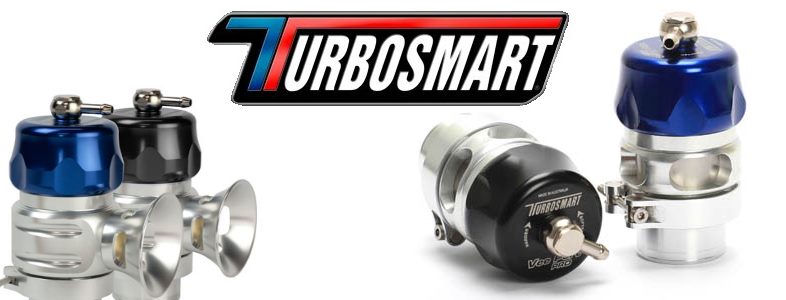$0.00
Industry Tech: What is a BOV? by Turbosmart
WHAT IS A BOV (blow-off-valve)
A blow off valve, also referred to as a dump, bypass, or a pop off valve, is a vacuum-activated pressure relief valve. A typical BOV consists of an inlet and outlet port, a piston, a spring and a vacuum connection point.
A blow off valve, also referred to as a dump, bypass, or a pop off valve, is a vacuum-activated pressure relief valve. A typical BOV consists of an inlet and outlet port, a piston, a spring and a vacuum connection point.
WHAT A BOV DOES
A BOVs’ function is to release excess boost pressure from the intake system when the throttle is closed. A perfect example of this is during on boost gear changes. Without a BOV, upon shutting the throttle, the pressurised air caught between the free-spinning turbo and the shut throttle is forced back through the turbine blades, this, in turn, forces the turbine to slow down or stall. This phenomenon is often referred to as “compressor surge” or “cavitation” and it places undue load on the turbocharger bearings, significantly shortening the lifespan of the turbo or even causing serious damage.
A BOVs’ function is to release excess boost pressure from the intake system when the throttle is closed. A perfect example of this is during on boost gear changes. Without a BOV, upon shutting the throttle, the pressurised air caught between the free-spinning turbo and the shut throttle is forced back through the turbine blades, this, in turn, forces the turbine to slow down or stall. This phenomenon is often referred to as “compressor surge” or “cavitation” and it places undue load on the turbocharger bearings, significantly shortening the lifespan of the turbo or even causing serious damage.
The secondary function of a BOV is to reduce the “turbo lag” effect between gear changes. Without a BOV, the compressor surge slows the turbine down, which then takes longer to spool up again when the throttle is opened. With a BOV, the excess boost pressure is released, keeping the turbine spinning and thus reducing the turbo lag effect.
HOW DOES A BOV WORK?
A BOV is usually mounted on the intercooler pipework between the turbocharger compressor and the throttle body, ideally on the throttle body side of the intercooler. A vacuum line connects the upper chamber of the BOV with a vacuum/boost source from the intake manifold. In its resting position, a spring holds the piston shut against the intake port.
Under boost with the throttle open, the blow-off valve remains shut. Upon shutting the throttle, vacuum is created in the inlet manifold, this vacuum combined with the pressure in the intercooler pipe forces the piston to open, releasing excess boost pressure in the intake system.
A BOV is usually mounted on the intercooler pipework between the turbocharger compressor and the throttle body, ideally on the throttle body side of the intercooler. A vacuum line connects the upper chamber of the BOV with a vacuum/boost source from the intake manifold. In its resting position, a spring holds the piston shut against the intake port.
Under boost with the throttle open, the blow-off valve remains shut. Upon shutting the throttle, vacuum is created in the inlet manifold, this vacuum combined with the pressure in the intercooler pipe forces the piston to open, releasing excess boost pressure in the intake system.
DIFFERENT TYPES OF BOVs
There are two main types of BOVs; atmospheric (or VTA – vent to atmosphere) and recirculating (Plumb Back). The difference between the two types is in how they dispose of the vented boost pressure.
Atmospheric BOVs vent the excess boost pressure out of the system into the atmosphere – hence the “atmospheric” name. These BOVs usually produce the much sought-after “whoosh” sound.
Recirculating or “Plumb-back” type BOV vents the pressure back into the intake system before the turbocharger inlet. They are practically silent compared to their atmospheric counterparts and are recommended for applications where the car needs to comply with noise or emission restrictions. They are also a good choice for off-road or rally applications where a sealed BOV system offers superior reliability and protection against damage caused by dirt, mud, sand etc.
50/50 – Turbosmart’s Dual Port is a combination of the two – equipped with both a trumpet and a plumb-back attachment giving the user a choice of three BOV options: atmo, plumback, or both. The staged ports on these BOVs make them an ideal choice for vehicles with sensitive air flow metered management systems.



